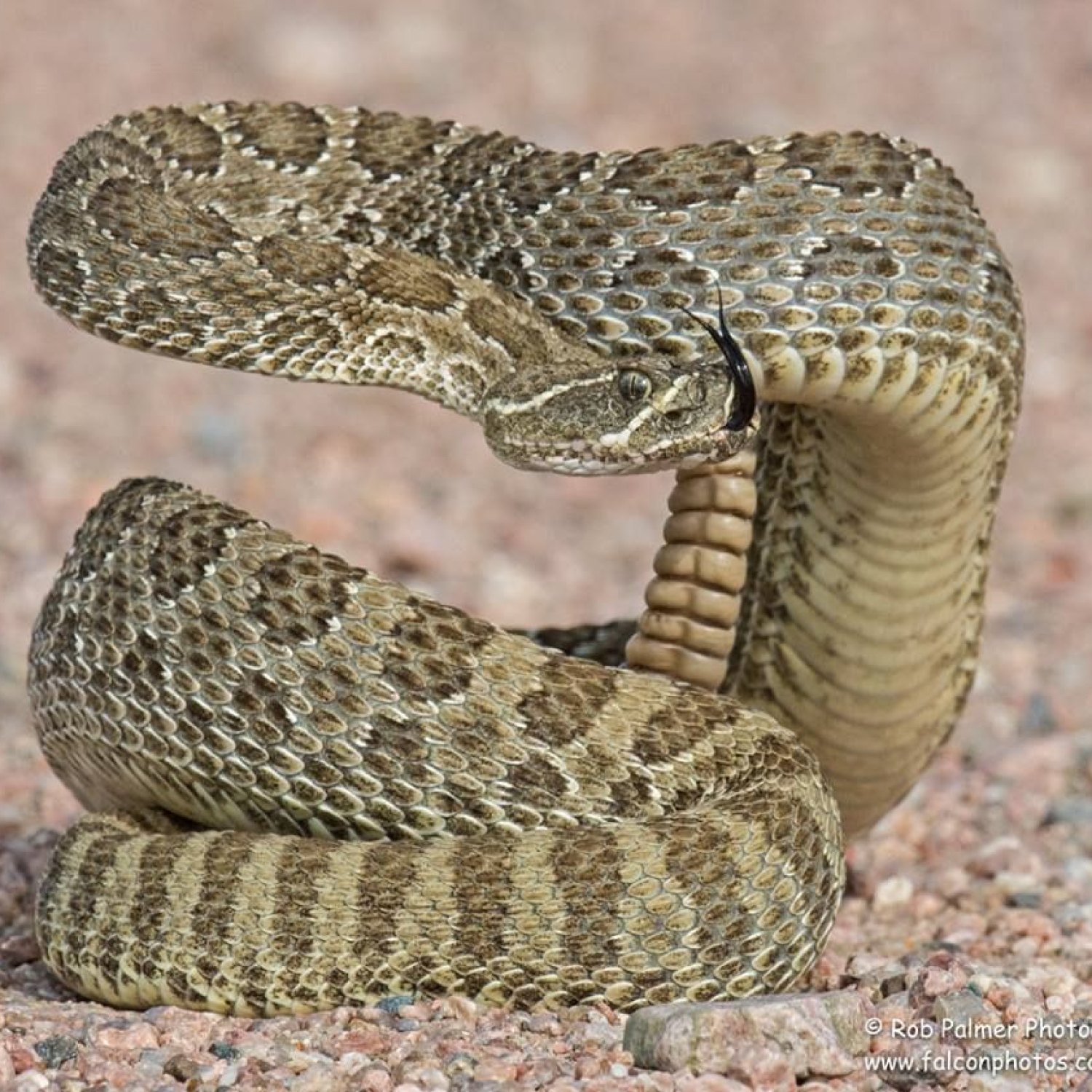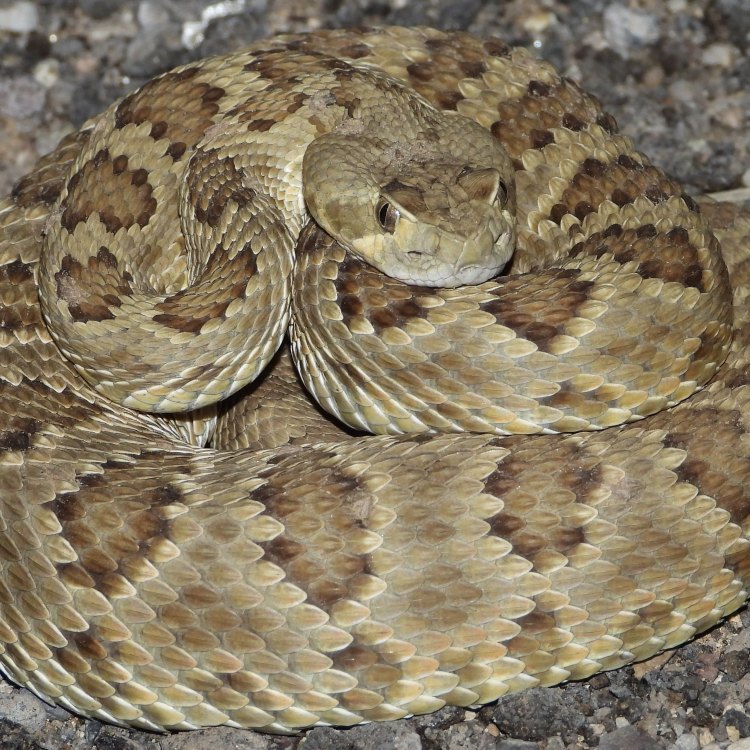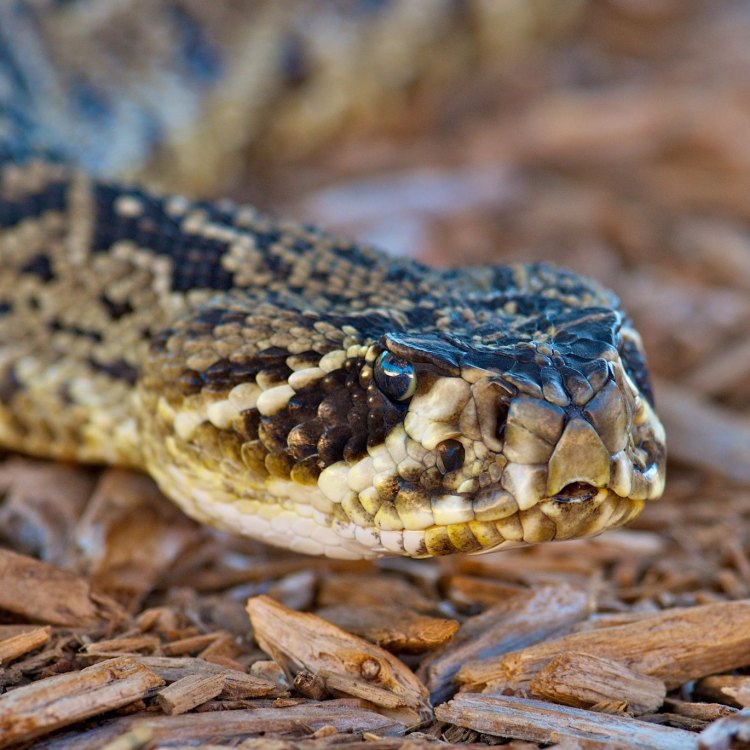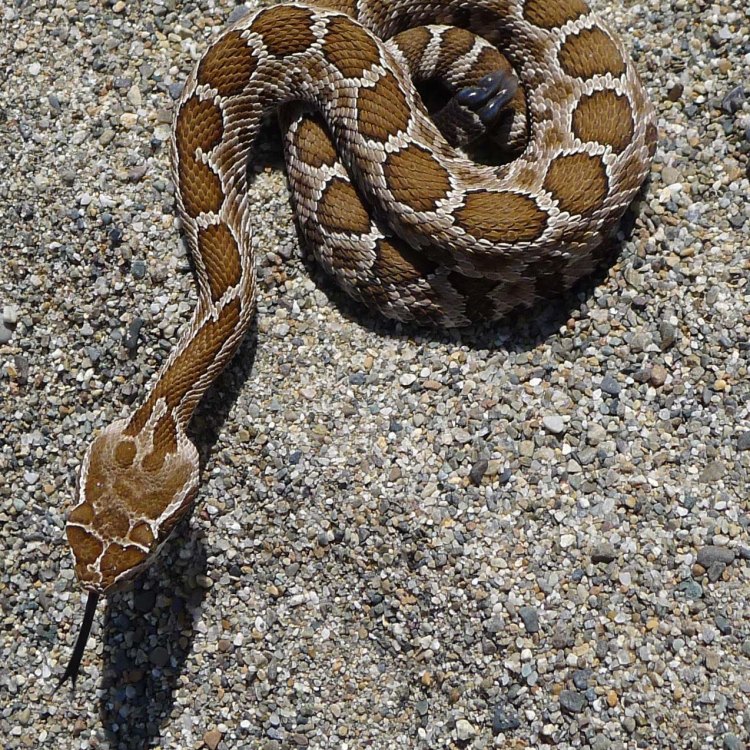
Rattlesnake
2 to 7 feet
The Rattlesnake, a member of the Viperidae family, is a heavy-bodied snake with a distinctive triangular-shaped head. It can reach lengths of 2 to 7 feet and is found throughout the United States except for Alaska and Hawaii. With its venomous bite and unique rattle, the Rattlesnake is a fascinating but potentially dangerous animal to encounter in the wild. Stay safe and admire from a distance. #rattlesnake #wildlife #venomous #USA
Animal Details Summary:
Common Name: Rattlesnake
Kingdom: Animalia
Habitat: Grasslands, deserts, forests
The Deadly and Fascinating Rattlesnake: A Closer Look at this Iconic Reptile
Rattlesnakes are one of the most feared and fascinating creatures on Earth. These venomous reptiles have captured the attention of humans for centuries, with their distinctive rattling sound and powerful bite. Found in various habitats across North and South America, the rattlesnake has become an iconic species, often depicted in movies, books, and even as a symbol of courage and resilience. In this article, we will take a closer look at this intriguing animal, exploring its unique characteristics and the role it plays in nature Rattlesnake.A Deadly Beauty: The Scientific Classification of Rattlesnakes
Known scientifically as Crotalus, the rattlesnake belongs to the Animalia Kingdom, Chordata Phylum, and Reptilia Class. It is a member of the Squamata Order and Viperidae Family, making it a close relative to other venomous snakes such as the copperhead and cottonmouth.One of the most interesting features of the rattlesnake is its ability to produce a distinctive rattling sound. This is made possible by a set of hollow, interlocking segments at the tip of its tail, called "rattles." Each time the snake sheds its skin, a new segment is added, resulting in a unique sound for each individual snake.
Habitats and Geographic Distribution
Rattlesnakes are primarily found in grasslands, deserts, and forests, making their homes in burrows, crevices, and rocky outcroppings. They are cold-blooded creatures and require warm temperatures to regulate their body temperature, making these sun-soaked habitats the perfect home for them.They are widespread across North and South America, with the United States being their country of origin. It is estimated that there are more than 30 different species of rattlesnakes, with each having its unique habitat and geographic distribution Root Aphids. However, they can generally be found throughout the United States, except for Alaska and Hawaii.
Feeding Habits: Carnivorous Predators
As carnivorous predators, rattlesnakes primarily feed on small animals such as rodents, birds, lizards, and even other snakes. They have a unique feeding method, using their heat-sensitive pits located on their faces to detect prey. These pits can pick up the infrared radiation from warm-blooded animals, making it easier for the snake to locate its next meal.Once they have located their prey, the rattlesnake will strike with a lightning-fast movement, injecting venom into its victim. This venom is a potent neurotoxin that paralyzes and kills its prey, making it easier for the snake to swallow whole.
The Beauty of Variability: Coloration and Physical Appearance
One of the most striking features of rattlesnakes is their coloration. While the common perception of a rattlesnake is a venomous snake with a brown, gray, or greenish-brown color, there are actually a wide variety of color patterns and variations among species.Some species have bright and vibrant colors, like the Mohave rattlesnake, with its pink and lavender hues, or the Eastern diamondback with its vivid black and white diamond patterns. On the other hand, some species have a more subdued appearance, such as the timber rattlesnake, with its dark brown or black coloration.
In addition to their coloration, rattlesnakes have a unique body shape. They are heavy-bodied reptiles, with sturdy and muscular bodies built for striking and constricting their prey. They also have a triangular-shaped head, which is a common feature among venomous snakes.
The Power of the Rattle: How Dangerous are Rattlesnakes?
With their venomous bite and powerful strike, it's no surprise that rattlesnakes are often feared by humans. However, the truth is that they are not as aggressive as some may think. Rattlesnakes are generally shy and solitary creatures, and will only bite as a last resort when feeling threatened. In fact, they prefer to avoid human interaction and will only strike if they feel there is no other option.Furthermore, despite their dangerous reputation, there are only about 8,000 reported cases of rattlesnake bites in the United States each year, with an average of only five fatalities. With prompt medical treatment, most rattlesnake bites are not fatal, and the snake plays a crucial role in the ecosystem.
The Vital Role of Rattlesnakes in Nature
Rattlesnakes may be feared by humans, but they play a vital role in maintaining balance in the ecosystem. As predators, they help control the population of rodents, which can become pests when left unchecked. Additionally, they also serve as a food source for other animals, such as birds of prey and other snakes.Furthermore, rattlesnakes are essential indicators of a healthy ecosystem. As predators, they are sensitive to changes in their environment, and their presence or absence can provide valuable information about the overall health of an ecosystem.
Conservation Efforts and Precautions
Unfortunately, many species of rattlesnakes are facing threats to their survival. Habitat destruction, urban development, and human persecution are all contributing factors. With 11 out of 33 species listed as threatened or endangered, it is crucial to raise awareness and promote conservation efforts to protect these unique and valuable creatures.Moreover, it is equally important for humans to understand the importance of coexisting with rattlesnakes safely. When hiking or spending time in areas known to have rattlesnakes, it's essential to remain vigilant and cautious. It's also important to keep pets on a leash and avoid disturbing or provoking these animals.
In Conclusion
Rattlesnakes are more than just a feared and misunderstood creature. They are a symbol of resilience, an important indicator of ecosystem health, and a vital predator in the food chain. With their unique physical appearance, fascinating behaviors, and crucial role in nature, the rattlesnake truly is a marvel of the animal kingdom. By understanding, respecting, and coexisting with these creatures, we can ensure their survival and continue to be in awe of their natural beauty.

Rattlesnake
Animal Details Rattlesnake - Scientific Name: Crotalus
- Category: Animals R
- Scientific Name: Crotalus
- Common Name: Rattlesnake
- Kingdom: Animalia
- Phylum: Chordata
- Class: Reptilia
- Order: Squamata
- Family: Viperidae
- Habitat: Grasslands, deserts, forests
- Feeding Method: Carnivorous
- Geographical Distribution: North and South America
- Country of Origin: United States
- Location: Throughout the United States except for Alaska and Hawaii
- Animal Coloration: Varies depending on species, but commonly brown, gray, or green with darker patterns
- Body Shape: Heavy-bodied with a triangular-shaped head
- Length: 2 to 7 feet

Rattlesnake
- Adult Size: Varies depending on species, but commonly 3 to 5 feet
- Average Lifespan: 10 to 20 years
- Reproduction: Sexual
- Reproductive Behavior: Mating occurs in the spring and the female gives birth to live young
- Sound or Call: Produces a rattling sound using its tail
- Migration Pattern: Some species migrate, while others stay in the same area year-round
- Social Groups: Generally solitary, but may gather in large groups during hibernation
- Behavior: Nocturnal and primarily ambush predators
- Threats: Habitat loss, illegal collection for the pet trade, and persecution
- Conservation Status: Varies depending on species, but many are listed as least concern
- Impact on Ecosystem: They play a role in controlling rodent populations
- Human Use: Some species are venomous and their venom is used in medicine and research
- Distinctive Features: Rattle on the tail, venomous fangs, heat-sensing pits
- Interesting Facts: Rattlesnakes are known for their distinctive rattling sound and can be found in a variety of habitats.
- Predator: Birds of prey, larger snakes, and mammals

Crotalus
Rattlesnakes: The Ambush Predators with a Rattling Warning
The name “rattlesnake” may evoke feelings of fear and danger, and for good reason. These venomous snakes are known for their distinctive rattling sound, used as a warning to potential predators or threats. Found in a variety of habitats throughout the Americas, the rattlesnake is a unique and intriguing species that deserves a closer look.Rattlesnakes belong to the family Viperidae, which includes other venomous snakes such as copperheads and cottonmouths PeaceOfAnimals.Com. There are over 30 different species of rattlesnakes, and their size can vary depending on the specific species, ranging from 3 to 5 feet as adults. They also have an average lifespan of 10 to 20 years, making them long-lived creatures in the reptile world.
These snakes reproduce sexually, with mating occurring in the spring. After mating, the female carries the fertilized eggs internally and gives birth to live young, known as snakelets. This is in contrast to other snakes, where the eggs are laid and undergo external development.
One of the most distinctive features of rattlesnakes is their ability to produce a rattling sound using their tails. This rattle is made up of several hollow segments of keratin, which is the same substance that makes up our hair and nails. The segments rattle against each other when shaken, creating a loud and unmistakable warning sound.
In addition to their distinctive warning, some species of rattlesnakes also have heat-sensing pits on their faces Ribbon Eel. These pits allow them to detect heat signatures of potential prey, making them skilled hunters and ambush predators. They are also primarily nocturnal, meaning they hunt at night, making them rarely seen by humans during the day.
Rattlesnakes can be found in a variety of habitats, including deserts, grasslands, and forests. Some species are known to migrate, while others stay in the same area year-round. This movement is often influenced by temperature and food availability.
As for their social behavior, rattlesnakes are generally solitary creatures. However, during hibernation, they may gather in large groups to seek shelter and conserve resources. This behavior is useful for surviving the colder months when food and warmth may be scarce.
But despite their unique features and abilities, rattlesnakes face numerous threats in the wild. Habitat loss due to human development is a major issue for these snakes, as it limits their available space and resources. Additionally, many rattlesnakes are illegally collected for the pet trade, which not only puts their populations at risk but also poses a danger to inexperienced owners.
Persecution is another major threat to rattlesnakes. Due to their venomous nature, they are often feared and killed on sight. However, these snakes play an important role in the ecosystems they inhabit. They are efficient predators of rodents, helping to control their populations and keep them in balance.
In terms of their conservation status, it varies depending on the specific species. Some are listed as least concern, while others are critically endangered. However, all rattlesnakes are protected by law in many areas, with strict regulations in place for their collection and trade.
But it’s not just their presence in the wild that has an impact on the environment. Rattlesnakes also have important uses for humans. Some species, like the Western diamondback rattlesnake, are venomous and their venom is used in medicine and research to develop treatments for various diseases. This highlights the interconnectedness of all species and the importance of preserving biodiversity.
Despite their potential danger, it’s important to remember that rattlesnakes play an important role in our ecosystem. Their presence helps keep rodent populations in check, which in turn benefits the environment and other species. And with proper education and understanding, we can learn to coexist with these unique and fascinating creatures.
In the wild, rattlesnakes have a few natural predators, including birds of prey, larger snakes, and some mammals. However, their biggest threat remains to be humans. But rather than fearing them, perhaps we should appreciate and admire their unique features and crucial role in our ecosystems.
In conclusion, rattlesnakes are truly remarkable and captivating creatures. From their distinctive warning rattle to their ability to control rodent populations, they are an essential part of the natural world. It is our responsibility to protect and conserve these snakes, not only for their sake but for the sake of our ecosystem as a whole. So the next time you hear a rattling sound in the wild, remember to pause and appreciate the incredible creature behind it.

The Deadly and Fascinating Rattlesnake: A Closer Look at this Iconic Reptile
Disclaimer: The content provided is for informational purposes only. We cannot guarantee the accuracy of the information on this page 100%. All information provided here may change without prior notice.












